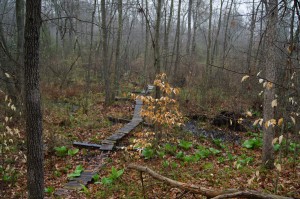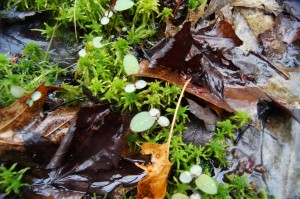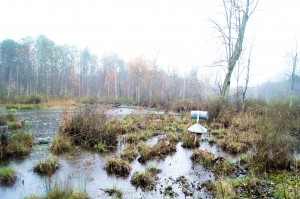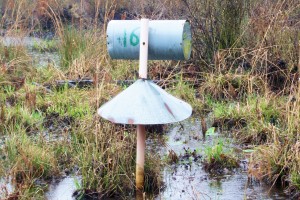Mistletoe Bog

Boardwalk across Mistletoe Swamp
This afternoon, Barb Dyko and I scouted out some boggy areas near the Wood Duck Pond. There are several slow flowing streams throughout this area and the layout of these streams are such that boggy areas can form. The first area were visited is of particular interest. Sometime ago FWS interns built a boardwalk across this bog to make it easier for them to transverse the bog on their way to Shangri La (more on this below) to check on wood duck nesting boxes.

We did not see a large open area as would be found in the classic magnolia bog, but we did see numerous sphagnum moss covered hummocks with open water in-between.

An extensive list of plants is obviously not yet available, but we noticed red maple, blueberries/huckleberries, sweet bay magnolia, poison sumac, various sedges, skunk cabbage among others. I am considering naming this area, “Mistletoe Bog” because there are four clumps of mistletoe up a nearby tree. The area appears to be at least 3 or 4 acres.
Shangri La

We continued down the trail crossing a couple of sloughs and arrived at Shangri La. Shangri La is a pond and swamp complex that was formed from an ancient river channel. We spotted at least 2 wood duck nesting boxes (there may be more). These nesting boxes are found throughout the refuge and are surveyed for nesting activity.

This will be an interesting area to botanically survey. Spadderdock was already blooming. Time constraints forced us to turn around before we could make a good survey of the area. You can bet that we will be back.
Besides waterfowl surveys and some hunting, there has been no significant human activity in the area between Wood Duck Pond and Bailey Bridge Pond and Borrow Pit Complex in many years. This area is the most remote and pristine area of the North Tract and the area has the potential of yielding some interesting and rare plants.

